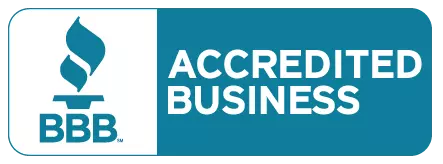Google Ads Metrics Explained: What to Track and Why
Understand the key Google Ads metrics that truly matter — from CTR and CPC to ROAS and Quality Score — and learn how to analyze them for maximum performance.
Introduction — Why Tracking Metrics Is the Core of Optimization
Running Google Ads without understanding your metrics is like investing without tracking your profits.
Metrics show you what’s working, what’s wasting budget, and where your biggest opportunities lie.
At The Commerce Gear, we help brands across Egypt, GCC, and global markets build data-driven dashboards that translate ad data into actionable insights.
This guide will help you decode Google Ads metrics — so you can make smarter, faster optimization decisions.
The Foundation — Understanding the Google Ads Funnel
Before diving into metrics, it’s essential to know how they fit into the funnel:
| Funnel Stage | Objective | Key Metrics |
|---|---|---|
| Awareness | Reach & Impressions | Impressions, CPM, CTR |
| Consideration | Traffic & Engagement | Clicks, CPC, Bounce Rate |
| Conversion | Sales & Leads | Conversion Rate, CPA, ROAS |
| Retention | Lifetime Value | Repeat Purchases, CLTV |
Each stage has its own set of metrics — track them separately for accuracy.
Key Google Ads Metrics (and What They Really Mean)
1. Impressions — Visibility
What it means:
The number of times your ad was shown on Google Search or Display.
Why it matters:
Impressions indicate your reach and visibility. A high impression count means strong exposure, but it’s not valuable unless paired with a good CTR.
Pro Tip: Use impression data to evaluate brand awareness and keyword match types — not conversions.
2. Clicks — Engagement
What it means:
How many people clicked your ad.
Why it matters:
Clicks show initial engagement — the first signal that your ad message resonates.
A good click volume combined with a healthy CTR suggests strong ad relevance.
Pro Tip: Monitor clicks by device and location to find your most valuable audience segments.
3. CTR (Click-Through Rate) — Ad Relevance
Formula: CTR = (Clicks ÷ Impressions) × 100
Why it matters:
CTR measures how compelling your ad is to users. A low CTR means your ad or keyword relevance needs improvement.
Benchmarks:
-
Search Campaigns: 3–6% average
-
Display Campaigns: 0.5–1% average
Pro Tip: Improve CTR with dynamic headlines, ad extensions, and keyword-to-ad message matching.
4. CPC (Cost Per Click) — Efficiency
Formula: CPC = Cost ÷ Clicks
Why it matters:
CPC tells you how much you pay for each click. Lower CPC = more traffic for your budget.
But beware: low CPC alone isn’t success — conversions matter more.
Pro Tip: Use Quality Score optimization (relevance, landing page experience, CTR) to reduce CPC naturally.
5. Conversion Rate (CVR) — Performance
Formula: CVR = (Conversions ÷ Clicks) × 100
Why it matters:
Conversion Rate shows how well your landing page and offer persuade visitors.
A high CTR but low CVR means you’re attracting the wrong audience or your UX is weak.
Benchmarks:
-
eCommerce: 2–3%
-
Lead Generation: 5–10%
Pro Tip: Run A/B tests on landing page design, offer, and CTA to boost CVR.
6. CPA (Cost Per Acquisition) — Profitability
Formula: CPA = Cost ÷ Conversions
Why it matters:
CPA measures how much it costs to acquire a customer or lead.
It’s one of the most important metrics for budgeting and bidding optimization.
Pro Tip:
Use Target CPA smart bidding once you have enough conversion data — it automates optimization around your target cost.
7. ROAS (Return on Ad Spend) — The Ultimate Metric
Formula: ROAS = (Revenue ÷ Cost) × 100
Why it matters:
ROAS tells you the direct financial return on your ad investment.
A ROAS of 400% means you earn $4 for every $1 spent.
Benchmarks:
-
eCommerce: 400–800%
-
Lead Gen: 200–400%
Pro Tip: Segment ROAS by product category or region to find your most profitable areas.
8. Quality Score — Ad Relevance & Experience
What it is:
A 1–10 score Google assigns based on:
-
Expected CTR
-
Ad Relevance
-
Landing Page Experience
Why it matters:
Higher Quality Scores reduce CPC and improve ad ranking — meaning you pay less for better visibility.
Pro Tip: Always align keywords, ad copy, and landing page messaging.
9. Impression Share — Competitiveness
What it means:
The percentage of impressions your ads receive vs. the total available for your keywords.
Why it matters:
It shows your market visibility — if it’s low, you’re losing to competitors on bids or budgets.
Pro Tip:
Increase Impression Share by raising your budget, improving Quality Score, or adjusting bid strategy.
10. CLTV (Customer Lifetime Value) — Long-Term ROI
Formula: CLTV = (Average Order Value × Purchase Frequency × Retention Duration)**
Why it matters:
It reveals how much a customer is worth over time — critical for scaling sustainably.
A high CLTV allows higher CPAs while staying profitable.
Pro Tip: Combine CLTV insights with Google Ads remarketing and CRM data for smarter acquisition decisions.
Building a Google Ads KPI Dashboard
At The Commerce Gear, we recommend visualizing your KPIs in Google Data Studio, Looker, or Power BI, combining:
-
Google Ads
-
GA4
-
CRM or Shopify data
Track metrics across:
-
Campaigns: Identify high-cost vs. high-return campaigns.
-
Geographies: Evaluate performance by market.
-
Devices: Mobile vs. Desktop vs. Tablet.
-
Audiences: New vs. Returning customers.
Common Reporting Mistakes
-
Tracking clicks instead of conversions.
-
Ignoring Quality Score and landing page UX.
-
Reporting averages instead of segmented performance.
-
Not excluding internal IPs (fake conversions).
-
Over-optimizing for CPC instead of ROAS.
Avoid these, and your analytics will start showing real insights — not vanity metrics.
FAQs — Google Ads Metrics
Q1: What is the most important Google Ads metric?
A: ROAS is the ultimate profitability metric, but CTR and CPA are key indicators of performance health.
Q2: How often should I review metrics?
A: Weekly for active campaigns; daily during promotions or new launches.
Q3: Why is my CTR high but conversions low?
A: Your ad is relevant, but your landing page or offer isn’t converting — test UX and messaging alignment.
Q4: What’s a good ROAS for eCommerce?
A: 400–600% is strong; top brands can reach 800%+ with remarketing and optimized feeds.
Q5: Can I automate reporting?
A: Yes — connect Google Ads with Looker Studio to create real-time dashboards.
Conclusion — Measure, Optimize, and Scale
Metrics are the truth behind your ad spend.
By understanding how each number fits the bigger picture, you can shift from reactive spending to proactive scaling.
At The Commerce Gear, we don’t just track metrics — we transform them into insights that power smarter bidding, higher ROAS, and long-term growth.
CTA — Get a Free Performance Report
📩 See What’s Driving Your ROAS
Our experts will audit your Google Ads metrics, identify leaks, and create a custom performance dashboard tailored to your goals.
👉 Contact The Commerce Gear




